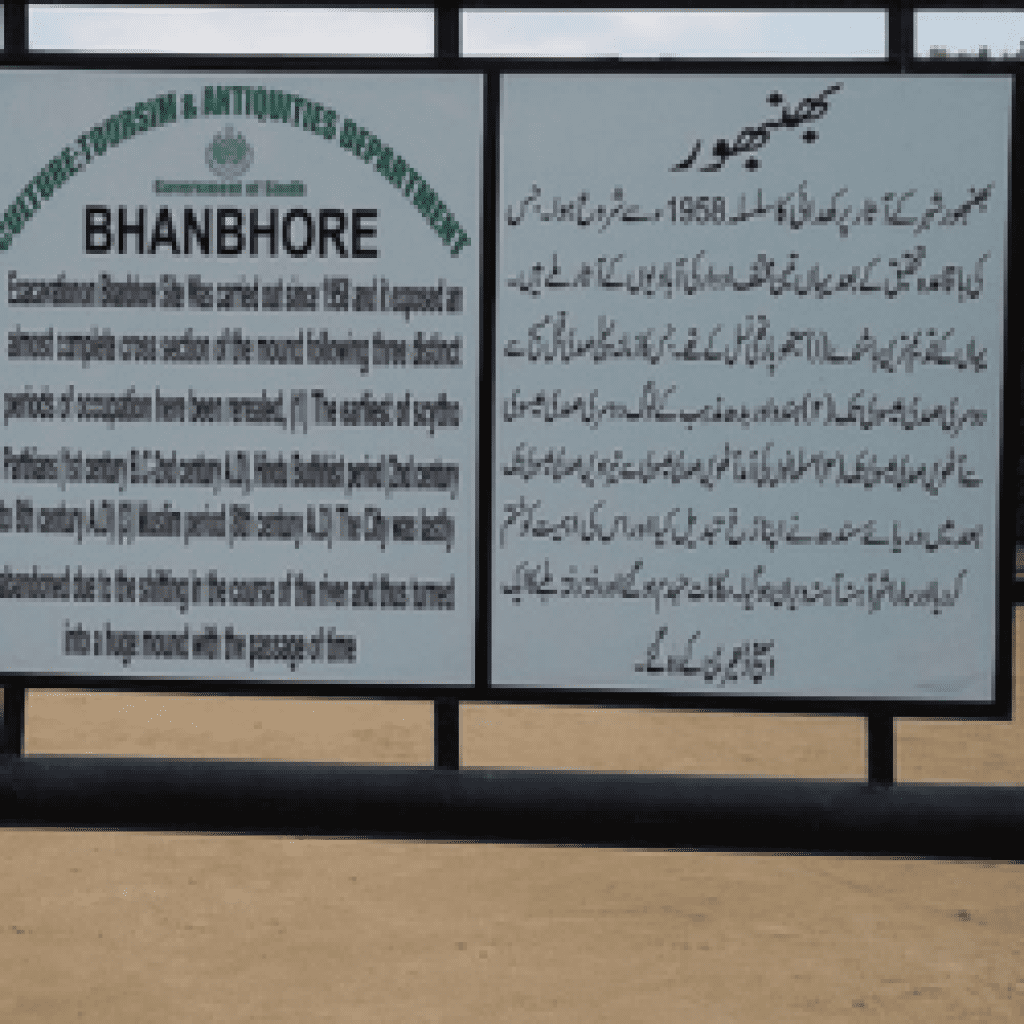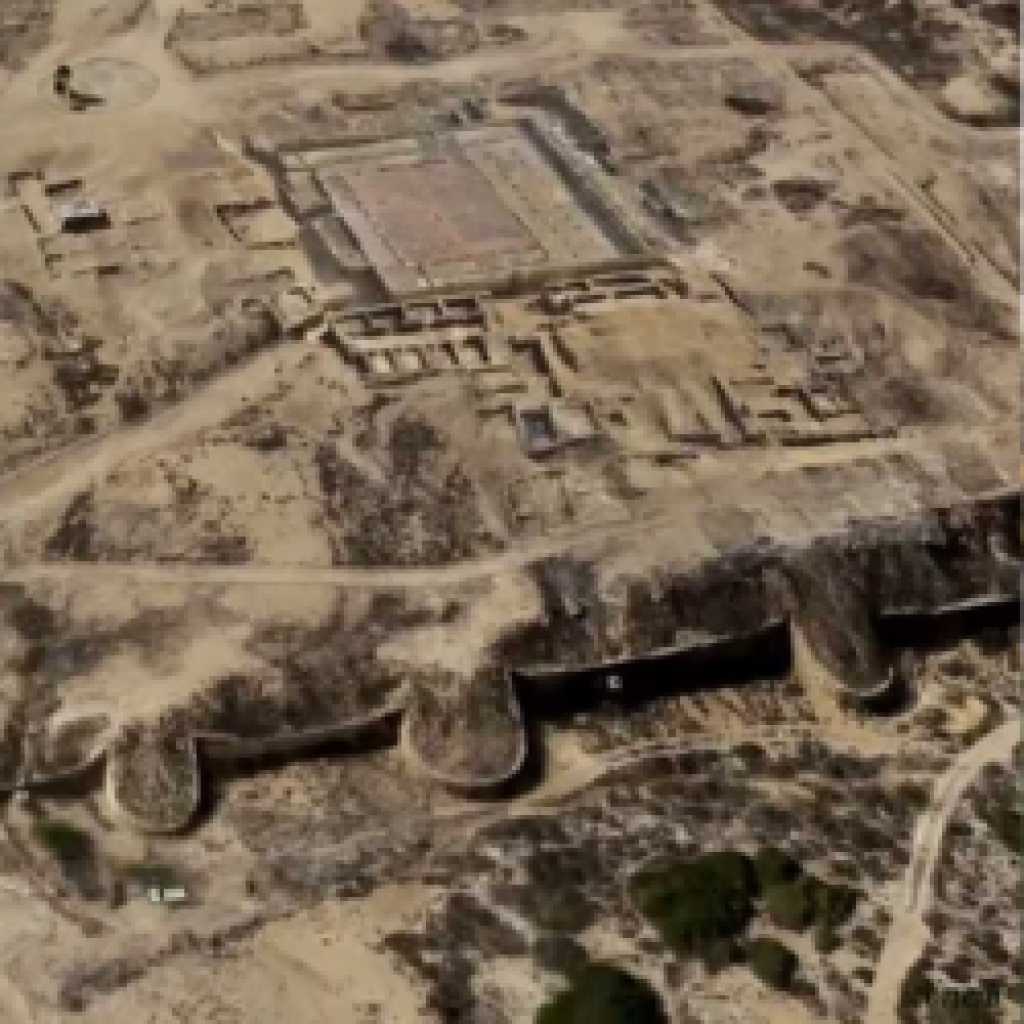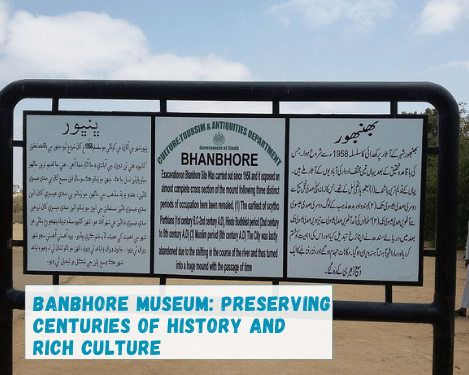Step into the past at Banbhore Museum, a hidden gem in Sindh, Pakistan. Explore ancient artifacts, archaeological wonders, and the captivating history of this remarkable region.



Table of Contents
Banbhore Museum
Located in the heart of Sindh, Pakistan, Banbhore Museum is a testament to the rich history and culture of this region. The city of Bhanbhore dates from the 1st century BC to the 13th century AD. Archaeological records reveal remnants of three distinct periods on the site: Scytho-Parthian (1st century BC to 2nd century AD), Buddhist (2nd century AD to 8th century AD), and early Islamic (8th century AD to 13th century AD).
We will take you on a journey through the museum’s compelling exhibits, showcasing a treasure trove of centuries-old artifacts and archaeological discoveries.
Discover the enigmatic world of Banbhore, an ancient city that dates back to the 1st century BC. Unearth the secrets of this once-thriving trade center through a captivating collection of pottery, coins, sculptures, and more. Each artifact tells a unique story of the city’s rise and fall, offering a glimpse into the past that shaped present-day Sindh.
Banbhore Museum isn’t just a place to admire relics; it’s a portal to a bygone era. With its commitment to preserving the cultural heritage of Sindh, the museum stands as a living testament to the region’s history. Don’t miss the opportunity to explore this fascinating institution that brings the past to life. Come and be mesmerized by the history and culture of Banbhore at the Banbhore Museum.
Nestled within the heart of Sindh, Pakistan, lies an ancient city that dates back to the 1st century BC – Banbhore, also known as Bhambore. Located on the N-5 National Highway to the east of Karachi, this historical gem has witnessed the rise and fall of various civilizations over the centuries. From the Scytho-Parthian era to Muslim rule and beyond, Banbhore’s history is a tapestry of time. In this article, we will delve into the intriguing history and archaeological significance of Banbhore, a site that was presented for UNESCO World Heritage status in 2004.
A City Steeped in History
Banbhore is situated on the northern bank of Gharo creek, approximately 65 kilometers east of Karachi, along the Thatta Highway between Gharo and Dhabeji. Its rich history spans from the 1st century BC to the 13th century AD. Archaeologists have unveiled remnants from three distinct periods: the Scytho-Parthian, Hindu-Buddhist, and early Islamic periods. However, its fate took a turn after the 13th century when the shifting course of the Indus River gradually transformed the city into a desert. Some historians argue that Banbhore may have been the historical city of Debal, conquered by the Arab general Muhammad Bin Qasim in 711-712 AD, following his victory over Raja Dahir, the last Hindu ruler of Sindh.
Archaeological Discoveries
Archaeological exploration in Banbhore dates back to the early 20th century, with notable excavations carried out by Ramesh Raja Majumdar in 1928 and Leslie Alock in 1951. From 1958 to 1965, renowned Pakistani archaeologist Dr. F. A. Khan led numerous studies and excavations. In March 2012, the first International Conference on Banbhore was organized by the Cultural Department of the Government of Sindh, where experts and archaeologists presented their research related to the site.
City Layout and Remains
Banbhore was a walled city with an enclosed area, protected by a mud wall and stone fortifications. A central stone wall divided the city into eastern and western sections. Within the eastern part, the remnants of a mosque were discovered, bearing an inscription dating back to 727 AD. This mosque is a well-preserved example of one of the earliest mosques in the region, built just sixteen years after the Arab invasion of Sindh.
A Flourishing Port City
Banbhore’s strategic location at the mouth of the Indus River made it a crucial trading hub. The city thrived on the trade of metal and ceramic goods, industrial activities, and connections to the broader Scytho-Parthian Empire and international traders in the Indian Ocean. It played a pivotal role in facilitating trade and cultural exchange between different regions.
Banbhore Museum: A Glimpse into the Past
The Banbhore Museum is not just a repository of ancient relics; it’s a time machine that transports visitors to a bygone era. With a strong commitment to preserving the cultural heritage of Sindh, the museum stands as a living testament to the region’s history. Don’t miss the opportunity to explore this fascinating institution that brings the past to life. Come and be mesmerized by the history and culture of Banbhore at the Banbhore Museum.
A UNESCO World Heritage Site Candidate
In January 2004, Banbhore was presented as a candidate for UNESCO World Heritage status by the Department of Archaeology and Museums of Pakistan. This recognition could further cement its place in history and help safeguard its archaeological treasures for generations to come.
Banbhore, with its rich history, archaeological significance, and the allure of its museum, continues to be a treasure trove for enthusiasts of history and culture. It’s a place where the sands of time hold the secrets of countless civilizations, waiting to be unearthed and cherished by those who seek to explore its mysteries.


0 Comment